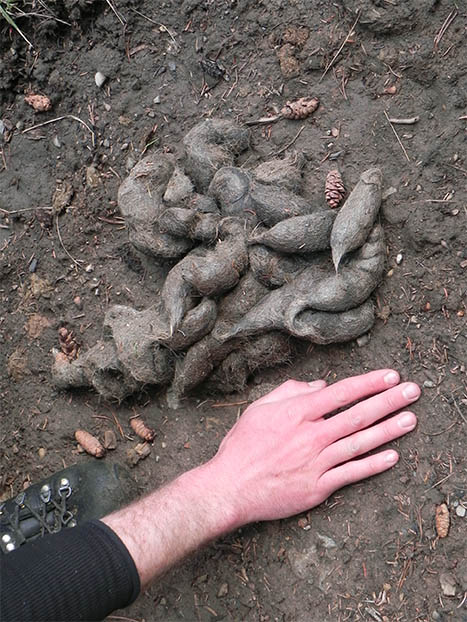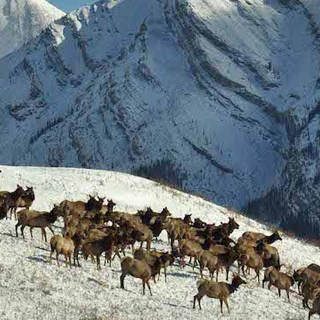Predation
Mitch Flowers will measure the local activity of wolves, cougars, and humans with remote cameras to investigate (i) how elk respond to local patterns of predator activity and (ii) how the intensity of these responses may differ between elk with different migratory strategies. With a network of remote cameras distributed across the winter range of Ya Ha Tinda’s elk population, he is currently modeling how the time needed for an elk to occur at a camera after a predator has been detected can be influenced by which predator was detected, elk group size, distance to human activity, and other environmental covariates. This project will examine how trading-off between forage and predation risk during summer may influence each herd segment’s behaviour during winter and help explain the relative success of different migratory strategies. By relating multi-predator risk to prey behaviour, rather than mortality, this research builds upon previous long-term monitoring efforts in a novel way and complements the work of two other M.Sc. students mapping spatial predation risk across the elk’s summer range.

Kara MacAuley is looking at the relationship of carnivores and ungulates in the Upper Red Deer River watershed, which includes Ya Ha Tinda (YHT) and Banff National Park. Predation risk has previously been modeled using surrogates for risk such as distribution of predators or encounters between predator and prey. Although commonly used, these metrics may not reflect attack success by a predator. The goal of this project is to provide a spatial model of mortality risk for ungulate prey by measuring where predator scats are found and what prey are present in these scats. The objectives of her research are to: (1) compare the contents of summer scats of cougars, grizzly bears, black bears, wolves and coyotes across landscapes with emphasis on distinguishing contents of elk adults and calves; (2) relate contents of elk calf and elk adult in predator-specific scats to the distribution of other predators and environmental characteristics of areas around scat locations; and (3) spatially model the mortality risk to elk based on scat contents across the Ya Ha Tinda region and assess model predictions to known ungulate kill sites. This study will be an important next step for improving the assessment of spatial risk to different migratory segments of this elk population, and addresses the question in a novel way.
Eric Spilker's study area is in the upper Red Deer River watershed, where we are looking at how multiple species of predators spatially interact and how distribution resulting from these interactions may translate into gradients of predation risk to elk and other ungulates in the area. To gather data, he used scat-detection dogs (with help from Conservation Canines) to find scats from grizzly bear, black bear, wolf, coyote, cougar, lynx and bobcat. Using scat locations, he is creating Resource Selection Functions (RSFs) for each individual predator species that will be based on available resources as well as the presence of other predator’s scats. He will also be using an existing data set of locations of known-predator kill sites of elk to determine how the distribution of the predator community may be affecting risk to elk.
Students: Mitch Flowers, Eric Spilker, Kara MacAuley
